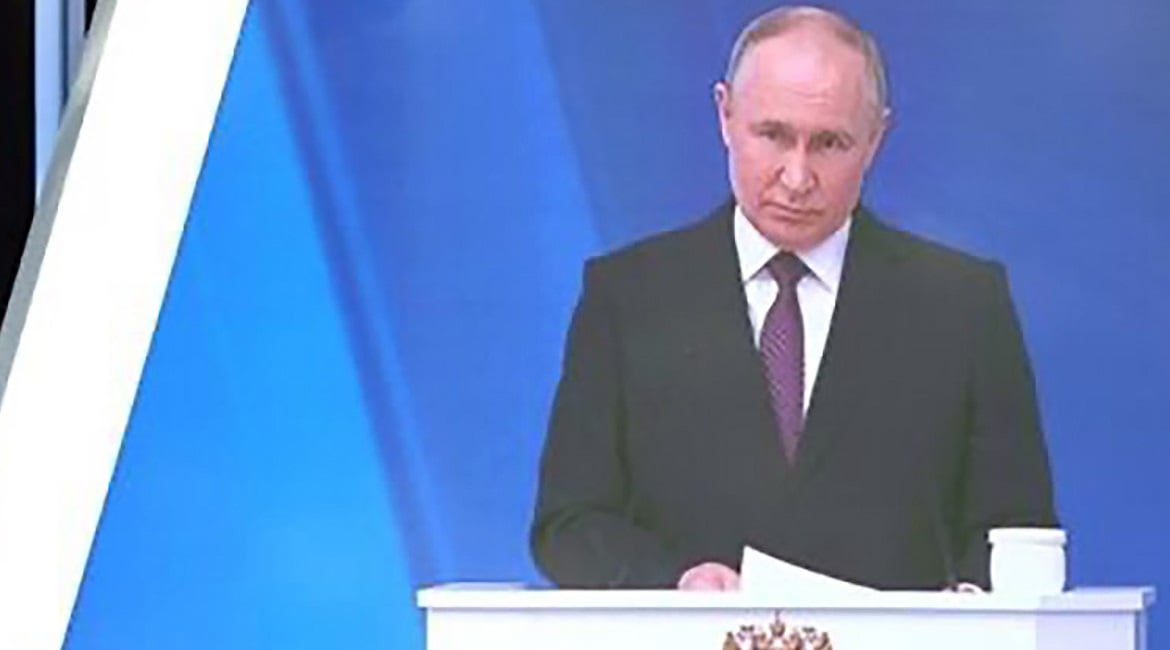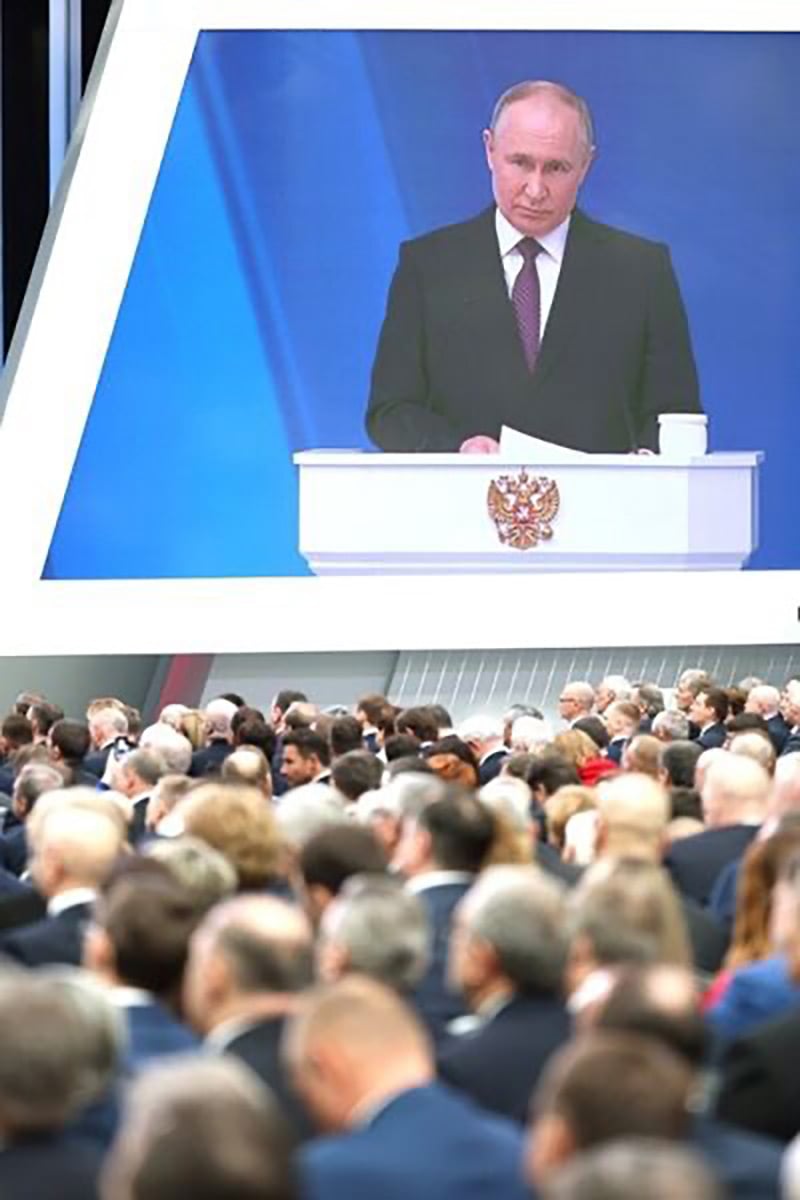
Date Posted: 05-Nov-2024
Author: Alex Petric, London, UK
Key points
- Intelligence requirement/question: This report assesses the intelligence requirement – understanding Russia's perceptions and intentions related to the updating of its nuclear doctrine and changing of its broader nuclear policy through reducing treaty obligations and increasing nuclear-related activities in 2023–24
- Significance: Changes in Russia's nuclear policy across 2023–24, paired with changes to the nuclear doctrine very likely indicate a significant shift in Russia's intentions to increase political threats to Ukraine and its NATO partners. Russian actions in 2023–24 included deploying nuclear weapons to Belarus, unveiling new delivery platforms, tactical nuclear drills, and disengagement from treaty obligations. The nuclear doctrine now considers an aggression from a non-nuclear-weapons state with participation or support by a nuclear-weapons state as “joint attack”
- Assessment and outlook: It is very likely that these changes are intended to communicate that Russia has lowered its threshold for a nuclear retaliatory counterstrike even against a conventional attack, if Russia deems it a “massed attack” that poses “a critical threat to sovereignty”. Janes assesses Russia will very likely use its doctrine and broader policy over the next 12 months for political pressure against Ukraine and its partners, invoking threats to Russia's security, such as long-range missile strikes on Russian sovereign territory. It is very likely that Russia will reinforce threats by demonstrating capabilities and actions such as weapons deployments or exercises. Janes assesses it is likely that in the next 24 months Russia will use the evolving doctrine also for political threats against Northern or Eastern European NATO countries, especially if Russia were to claim it detected deployment of long-range weapons inside such countries' territories
Intelligence requirement/question
The report analyses the changes in Russia's nuclear policy and its doctrine – ‘Basic principles of State Policy on Nuclear Deterrence'. The report addresses the following questions:
- What is the significance of Russia's policy actions in 2023–24 – its deployments of nuclear weapons, modernisation programmes, as well as field exercises of its tactical nuclear forces?
- Why does Russia view the actions of NATO states across the Northern and Eastern Europe as threatening, and how it plans to ensure its national security?
- What are the implications for the ongoing Russia-Ukraine conflict, and what are the broader implications for Russia's relationship with NATO states?
- How, and for which political purposes, is Russia likely to use the introduced changes – the lowered nuclear weapons use threshold, the expansion of nuclear protection over Belarus, and the broadening of the scenarios under which Russia reserves the right to retaliate to conventional attacks with a nuclear counter-attack?

President Vladimir Putin addresses the Federal Assembly on 29 February 2024. (Administration of the President of Russia)
Significance
Russian President Vladimir Putin announced updates to the country's nuclear doctrine at a televised National Security Council meeting on 25 September 2024. The meeting included nine key officials, including Minister of Defence Andrei Belousov, heads of security agencies, and chiefs of Rosatom and Roscosmos, state corporations charged with the state nuclear and space programmes.
Putin pointed out that this is a “regular, semi-annual meeting” and emphasised its formal title, the ‘Continuous consultation on nuclear deterrence'. He added that the changes were not sudden, rather they were prepared over a year of deliberation by the joint experts from the Ministry of Defence (MoD), Ministry of Foreign Affairs, and the Security Council. Janes assesses that the formalities of the meeting, the audience, and the TV cameras, were very likely calculated to underline Russia's resolve and intent, and to reach the broadest, especially international, audience.
Despite the announcement, a formal executive presidential order has not been published at the time of publication. On 23 October Belousov reiterated the doctrine in a meeting of the joint boards of the Russian and Belarusian MoDs, stating that the “adaptations to the nuclear deterrence doctrine were a consequence of the changing military-political situation”.
According to Putin's statement, the updates expand Russia's list of adversaries, now considering aggression from a non-nuclear-weapons state (NNWS) with participation or support by a nuclear-weapons state (NWS) as “their joint attack”.
The written statement on changes to the doctrine, read by Putin on 25 September, and published on the official Kremlin website details the conditions for escalating to a nuclear response – Russia will consider nuclear retaliation “upon receipt of information of a massed launch of air-or-space attack weapons and their crossing the state border”. Putin specified that such attacks include “strategic and tactical aircraft, cruise missiles, unmanned aerial vehicles (UAVs), or hypersonic or other aircraft”. The doctrine formally includes Belarus, stating that nuclear retaliation can be used as a response to an attack on Russia or Belarus “including if the enemy attacks with conventional weapons” if such an attack could pose “a critical threat to sovereignty”. The latter is a lowering of the threshold from the June 2020 doctrine, which stipulated that Russia would use nuclear retaliation against a non-nuclear attack only if “very existence of the state was at risk”.
Russia's actions in 2023–24
The updates to the doctrine follow a trend of changes to nuclear policy across 2023–24, indicated by a series of concrete actions, which Janes assesses with high confidence demonstrate that Russia very likely plans to increasingly rely on threats of nuclear deterrence to exert political pressure. The actions included:
- Suspending participation in the 2010 New START Treaty on nuclear arms reduction in February 2023
- Deploying tactical nuclear weapons to Belarus in June 2023
- Unveiling of, in February 2024, four newly constructed modernised versions of the Tu-160M Blackjack nuclear bombers, after production was discontinued in 1992
- Commencing tactical nuclear drills in three stages on 21 May, 11 July, and 31 July 2024
- Deratifying the 1996 Comprehensive Nuclear Test Ban Treaty in November 2023.
These actions were further substantiated by both the Kremlin and MoD. In March 2024 Putin announced that Russia delivered the Iskander-M (SS-26 Stone), the 500 km-range nuclear-capable missiles to Belarus, while on 13 June 2024 the Belarusian Air Force displayed a Su-25 Frogfoot aircraft, which, as asserted, was refitted to carry nuclear payloads.In February 2024 in the annual televised Presidential Address to the Federal Assembly of both chambers of parliament, Putin ordered the MoD and Rosatom to reinstate into readiness the nuclear testing site on the Novaya Zemlya archipelago. The Arctic site is where the Soviet Union conducted over 200 nuclear tests between 1955 and 1990. Satellite images published by CNN in September 2023 indicated increased site activity as compared with 2021 – detailing construction of one large building; one small building; and presence of large trucks, construction supplies, shipping containers, and construction cranes at the site.
At the ‘Expanded MoD Collegiate Meeting' on 19 December 2023 Putin praised the defence industry's nuclear weapons modernisation programme, specifically mentioning “missile-launched systems, submarine, and strategic aviation”. He added that the state defence order for modernisation “is being carried out methodically”.
According to Janes data, as of 2024 Russia possesses approximately 1,710 strategic nuclear warheads and, in addition, approximately 3,870 other nuclear warheads.
Janes assesses that Russia very likely uses the dual approach – diplomatic threats and disengagement from its treaties, on the one hand, and increased nuclear exercises, on the other – to pressure NATO members to rethink their positions both on supporting Ukraine, as well as on their new missile bases, constructed in the alliance's northeastern flank countries.
The concrete actions to demonstrate an increased reliance on nuclear threats has also been accompanied by ambiguous signals. In June 2024 Russian diplomats continued with language of ambiguous threats of a future Russian asymmetrical response. Such responses have been seen following the Ukrainian military's long-range UAV strikes against Russia's early warning missile defence systems, specifically attacks against a ‘Container 29B6' radar in Kovylkino on 17 April, ‘Voronezh-DM' radar in Armavir on 23 May, and ‘Voronezh-M' radar in Orsk on 26 May. In response Russian Deputy Foreign Minister Sergei Ryabkov stated on 3 June that “attempts to attack missile warning systems will be stopped” and that “the response may be asymmetrical”.
The language of “joint attack” and “aggression from an NNWS with participation or support by an NWS” appeared in two earlier Putin's statements where he discussed Russia's response to a possible Western ‘authorisation' of Ukraine's strikes into Russia's sovereign territory. In statements on 28 May and 12 September 2024, Putin argued that any deep strikes into Russia's territory executed by Ukraine with Western missiles, will be seen as “direct participation of the NATO states” in the military conflict.
For more information, please see Russia’s evolving nuclear policy very likely to increase political threats and pressures against Ukraine and NATOs northeastern members





